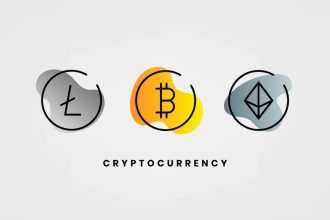What exactly are NFTs? And how do they function? If you’ve been following the tech headlines lately, you’ve definitely come across words like Bitcoin, blockchain, and, more recently, NFTs. Stories of multi-million-dollar auctions for digital assets have piqued the interest of both artists and collectors.
We will look at the fundamentals of non-fungible tokens, the technology underlying them, and their applications in daily life. We also look at some of the skills and information required to participate in them.
Related: The Future of Non-Fungible Tokens: How NFT Gaming is Leading the Way
What are NFTs?
Non-fungible tokens, or NFTs, are smart contracts that reflect ownership of one-of-a-kind goods digital art, videos, music, tickets to an event, legal documents, etc.
The term “non-fungible” simply means that something is unique and cannot be replaced with another. A $1 bill, for example, is a fungible object since one dollar note may be substituted by another and be viewed and valued the same. Outside of the crypto realm, “non-fungible” assets include diamonds, land, and even baseball cards. Because of its unique features, a non-fungible thing cannot be interchanged with other items.
The Ethereum blockchain protects and records the transaction and contract, and NFTs can only have one real owner.
Follow these 7 ways to make money with NFTs:
Create and Sell NFTs
The most effective way to make money with NFTs is creating and selling them Yes, you may make and sell anything digital as an NFT, including artwork, photographs, films, memes, properties, and so forth. If you have a creative streak, you can monetize all of your efforts by selling them as NFT.
Using services like Appy Pie, you can generate money off of your own personal NFT collection that you can then sell to others. If you want to make even more money off of your NFTs, you may pay to have them listed on other markets like OpenSea, Raible, etc.
So, let your imagination run wild, make great NFTs, or use Appy Pie’s NFT generator to turn your digital masterpieces into NFTs that you can sell for any price you want.
Rent Out NFTs
Renting out NFTs may be a viable way for NFT developers and collectors to generate passive revenue. The interesting thing about NFTs is that you can use them forever without having to make new ones.
You may rent out your NFTs for use in games or on any platform where consumers can borrow NFT cards. You may even rent or lend NFTs to others via services like reNFT.
There is no need to be concerned since all of the NFTs that you rent are regulated by smart contracts. Nonetheless, the NFT owner has the option to establish the desired length of the rental agreement as well as the leasing fee for the NFT.
NFT Gaming
NFT-based video games are another well-known means of generating money using NFTs. There are games that allow you to buy in-game products as NFTs and exchange them, allowing you to make money. Nonetheless, their numbers are now restricted.
With the buzz around NFTs, there is little doubt that you will witness an increase in the number of games that support NFT trading in the near future.
Another reason why in-game NFTs will become more popular in the future is that they are significantly more complex than basic digital trading cards or even more involved NFTs such as virtual pieces of art.
NFT Royalties
Setting up a royalty on your NFTs is an excellent method to secure a steady stream of money. You may make money via NFT royalties anytime your NFT changes hands on the secondary market, which means you will continue to earn money even after selling your work to collectors.
If you put a 10% royalty on your NFTs, for example, you will get 10% of the total selling price each time your digital asset is resold to a new owner.
What’s more, since the whole process is automated, you won’t have to enforce your royalty conditions or manually monitor payment. Set your royalties and profit every time someone buys your NFT.
Related: Why are NFTs Growing in Popularity?
Stake NFTs
Staking NFTs is another tried and true way of profiting from NFTs. To stake NFTs, you have to put digital assets in a De-Fi protocol smart contract and “lock them away” in order to get a return.
Staking is the act of saving digital works in the form of a “stake” and assigning them to people willing to maintain their maintenance while paying you a portion of the return for your NFT.
You can use platforms like Kira Network, Splinterleads, Only1, and NFTX to bet on your NFTs and earn passive income.
Frequently Asked Questions
What NFT should I buy right now?
- Battle Infinity
- Silks
- Lucky Block
What kind of NFTs sell best?
Art.
What does the cost involve in minting NFT?
Its current rate for minting a single NFT is $2.16. At this pace, minting 10,000 NFT will cost more than $21,000.
Why should I buy an NFT?
NFT allows individuals all around the globe to share information more simply and effectively.
Is it worth selling NFTs?
An NFT has value because the buyer and their community feel it does, as is true of all art and collectibles.
What software do NFT artists use?
- Adobe Illustrator.
- Adobe Photoshop.
- NFT Creator.
- Krita.
How long does NFT take to sell?
Enlisting your NFTs for sale on Rarible is a quick process that should take around 5 minutes.















